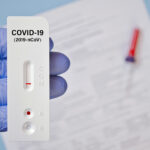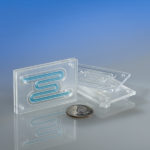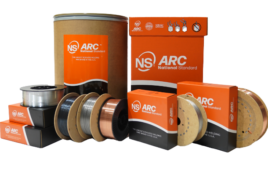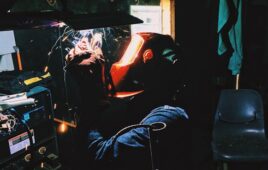Written by Emma Wood
Global Product Manager | Emerson
~ All Images courtesy of Emerson

Laser welding does not generate particulates. This is particularly important in the microfluidic systems used in many biomedical applications where narrow pathways could become contaminated or clogged by debris.
Several of today’s advanced applications involving plastic components are also some of the smallest. Developing compact devices that contain sensors and other tiny, delicate internal elements is a high priority for designers and manufacturers, particularly in the automotive and electronics industries.
The same is true in medical devices used for in-vitro diagnostics (IVD), vital-signs monitoring, and injection and inhalation-therapy applications.
There’s a lot of complexity — geometric and electronic — inside these small devices as manufacturers attempt to offer more features without increasing size. Product quality, durability, precision, and aesthetics are also critical objectives.
So, what is the ideal way to assemble these small yet significant plastic devices?
Many designers rely on micro-welding laser technology as an alternative to conventional fasteners or adhesives. The precision and controllability of laser welding make it ideal for meeting the challenge of creating small and reliable joints. Such joints can be as short as a few tenths of a millimeter and as narrow as 100 µm in parts with a surface area the size of a postage stamp.
Choosing laser
There are several reasons why a laser is ideal for micro-welding, including the following.
Control. It’s possible to accurately control the power dissipation within the weld by varying the power of the laser source. In Through-Transmission Infrared (TTIr) laser welding, radiation travels through an IR-transparent part and heats the surface of the mating part, but only to a specified depth. Heating is precise and highly localized to the area touched by the narrow IR beam. This is critical for parts with small sections and thin walls, and the resulting welds are nearly as strong as the parent material(s).
Particulate-free. The laser-welding process is non-intrusive, and parts typically exhibit excellent cosmetic properties, which are essential for small parts where a minor aesthetic flaw is obvious. Also, there’s no frictional motion between the parts, so the welds are entirely free of particulates. This is critical for components with narrow pathways (such as micro-fluidic systems used in many biomedical applications), which risk contamination or clogging from debris during the welding process. The precisely controlled heat and pressure are beneficial, minimizing the risk of polymer displacement or channel collapse.

There are solutions that address the challenges of micro-welding applications involving small and intricate plastic components. For example, the Branson GLX-1 laser welder is Industry 4.0/IIoT (industrial internet of things) capable, delivering actionable operational data via OPC-UA interfaces.
Design flexibility. The versatility of the laser-welding process makes it ideal for assembling extremely small components. Weld lines that span different three-dimensional spatial planes can be problematic with other bonding methods but are joined easily with lasers.
Lasers can bond several materials, such as thermoplastic elastomers and other soft plastics, including combinations of dissimilar materials. Intricate internal welds are also possible.
Gentle. Several small products — such as earphones, smartwatches, or automotive sensor packages — contain delicate electronic components that are easily damaged during assembly.
Micro-welding bonds sensitive electronic and mechanical without damage because there’s little movement of the parts during joining and no excitation or vibration. The welding machine parts make no contact with the weld line. Force is applied to hold the parts, but at non-critical areas or surfaces, protecting them from damage.
Speed. Laser welding is virtually instantaneous, with reliable bonding in as little as 0.5 seconds, so it suits the high-volume production of small components. Unlike welders that focus laser light on only a small portion of the weld line at a time, simultaneous laser welding is an option that heats the entire weld surface at one time — dramatically reducing cycle time without compromising quality.
There’s increasing demand for smaller and more intricate plastic components, often housing sensitive electronics, in several important markets. Manufacturers are looking for systems that deliver strong, clean joints in a highly compact package that suits installation in automated process lines. Such a solution is found in laser welders that specifically target micro-welding applications.









Tell Us What You Think!